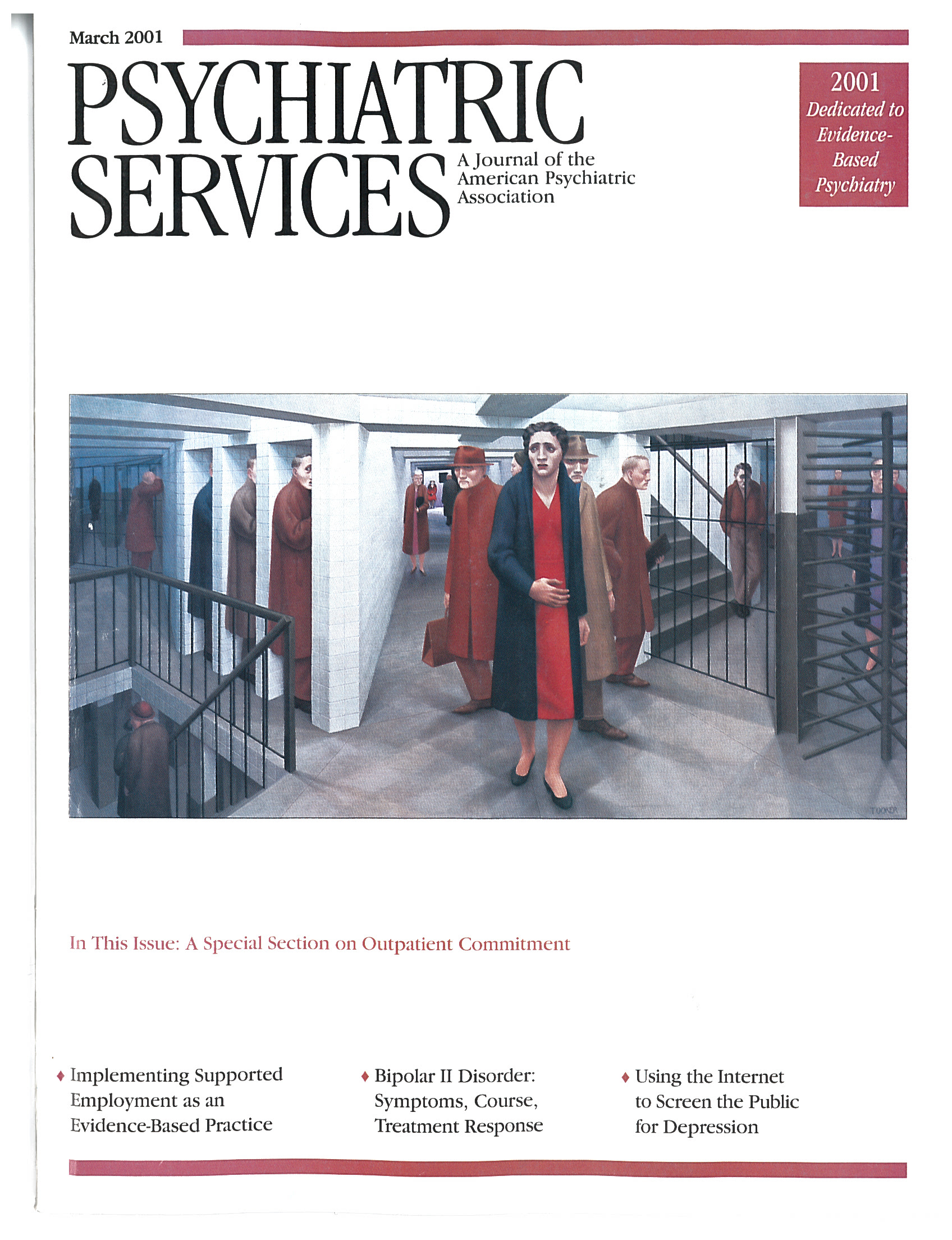Psychotherapy for Personality Disorders Cognitive Behavior Therapy of DSM-IV Personality Disorders: Highly Effective Interventions for the Most Common Personality Disorders
Psychotherapy for Personality Disorders, edited by Gunderson and Gabbard, and Cognitive Behavior Therapy of DSM-IV Personality Disorders, written by Sperry, are both efforts to use research evidence and clinical theory to guide therapists in providing effective treatment for an important but often underserved patient group.
Population estimates for any single personality disorder suggest that .5 percent to 3 percent of the general population meet the criteria for personality disorder, whereas this group makes up 2 to 30 percent of clinical populations (1). Yet because of their frequently knotty behavior patterns and the pressures of today's health care market, such patients often do not receive the level of care and duration of treatment they need.
Gunderson and Gabbard's volume contains some useful information that is not as well articulated in Sperry's book, but Sperry generally provides a more readable text, a more succinct focus, and a better use of supportive evidence from peer-reviewed research. His book thus offers more overall value for the practicing clinician.
Sperry's book comes off so well because it is the product of a single author, it is centered on a specific theoretical orientation, and it uses the same format for discussion of each personality disorder. Introductory chapters provide an overview of the historical changes in the conceptualization of and the criteria for personality disorder. They amply describe the development of cognitive-behavioral theory and its relationship with later psychodynamic frameworks.
Of particular interest in these chapters is the way material is organized around the psychological construct of schemas, which were originally employed by Adler (2). Schemas are the basic belief patterns that individuals use to organize their understanding of themselves and others. They are presuppositional and often operate outside of conscious awareness (3). The term has found resonance with psychodynamic (4) and cognitive (5) clinicians and theorists as well as with cognitive scientists (6). As such, it provides a promising integrative framework for understanding personality disorders.
The specific cognitive and behavioral techniques useful in changing maladaptive personality patterns are discussed in significant detail and are sufficiently referenced. Each therapeutic technique is rooted in the empirical research base from which it is derived, and the reader is referred to at least one of these sources for further clarification. Finally, both theory and technique are applied to each of the cluster B and C disorders, except that of antisocial personality disorder. Unfortunately, no explanation is given for the exclusion of cluster A disorders, and certainly a good case for the use of social skills training could be made for many of these individuals.
Each disorder-specific chapter uses a case example and delineates a template for therapeutic engagement, maladaptive pattern analysis, strategies for pattern change, and approaches to maintaining change and proceeding through termination. Medication strategies are integrated with psychotherapeutic strategies throughout, although unfortunately without the careful attention to the peer-reviewed literature evident in the discussion of cognitive-behavioral techniques.
Due attention is given to transference and countertransference issues and the use of adjunctive therapies such as marital, family, and group therapy. Although this more programmatic arrangement of the text makes for somewhat drier reading at times, especially after the thoughtfully developed introductory chapters, it also makes the book highly useful as a resource for practicing clinicians of all mental health disciplines, whether seasoned or in training.
Gunderson and Gabbard's text is affected by the unevenness common to edited volumes. Although the editors are to be applauded for including a chapter devoted to a review of the outcome literature on personality disorder, the chapter is organizationally and theoretically unfocused. It does not develop an effective methodology for grouping studies of similar type, design, or outcome measures. Such organization would provide guideposts for the reader eager to become familiar with the most effective approaches.
By contrast, a chapter focusing specifically on the combination of pharmacotherapy and psychotherapy is helpful for all clinicians, whether or not they can prescribe medication. It begins with a solid conceptual discussion of temperament and character and the concomitant roles of biology and environment in personality development as a framework for understanding the role of combined treatment. Specific medication recommendations are well grounded in peer-reviewed clinical studies. The chapter provides a well-developed examination of the issues involved in the choice of the one-provider or the two-provider model when medication and psychotherapy are combined. Although at times the discussion reveals a bias toward psychiatrists, it is generally evenhanded and thoughtful in its approach to different clinical disciplines, and it discusses transference, risk management and liability, and the need for role clarity among all providers.
Finally, a chapter on antisocial personality disorder provides thoughtful conceptual consideration of the gradient of antisociality and corresponding responsiveness to treatment, which provides a necessary corrective to the often-held yet erroneous conviction that this spectrum of maladaptive behaviors is not at all susceptible to psychotherapeutic intervention.
Dr. Boggio is associate vice president at the Matthews Media Group in Rockville, Maryland, and has a private practice in Falls Church, Virginia.
1. American Psychiatric Association: Diagnostic and Statistical Manual of Mental Disorders, 4th ed. Washington, DC, American Psychiatric Association, 1994Google Scholar
2. Ansbacher H, Ansbacher R: The Individual Psychology of Alfred Adler. New York, Harper & Row, 1956Google Scholar
3. Beck AT, Rush AJ, Shaw BF, et al: Cognitive Therapy of Depression. New York, Guilford, 1979Google Scholar
4. Horowitz M: Introduction to Psychodynamics: A New Synthesis. New York, Basic, 1988Google Scholar
5. Beck AT: Thinking and depression: II. theory and therapy. Archives of General Psychiatry 10:561-571, 1964Crossref, Medline, Google Scholar
6. Stein D, Young J: Cognitive Science and Clinical Disorders. San Diego, Academic, 1992Google Scholar



